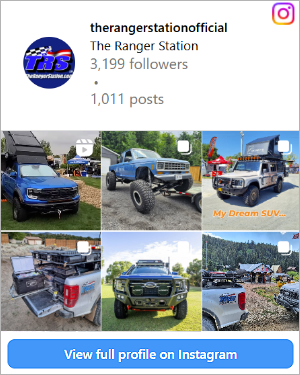FINALLY finished my 2nd crossmember

 View attachment 133155View attachment 133156
View attachment 133155View attachment 133156
Kinda at a loss as to what to do about the one that's supposed to be right above the axle though.. not enough space to really put a tube member there.. the diff would hit it on compression long before the axle tubes would hit the bump stops.. can't really put one just forward or just rearward of the axle as that's where the shock mounts need to be..
Almost considering running two lengths of tube parallel with the frame.. one on either side of the pumpkin.. connecting this one I just finished and the one out back. It would give me an excuse to finally use the tubing notcher I picked up a few years ago and would REALLY stiffen things up.. but then I'd need to fab some upper shock mounts since the tubes would likely be in the way of the factory ones.. not a big deal in the grand scheme of things but I'm kinda tired of fab for the year lol.
Decisions decisions..
Nothing critical here, actually I’m asking to be educated. I have a couple of questions for the group.
I vaguely remember from mechanical engineering classes 50 years ago that there’s a reason why those cross members are riveted or bolted instead of welded. As tight as they are, the rivets will still allow a tiny bit of motion. I realize some of you guys want to stiffen the frame, but again my vague memory tells me that having it riveted with the tiny little bit of motion prolongs the life of everything because it avoids fatigue failures. What do you think about that?
Also, when I built the Road Ranger and added the drag along axle, I had to remove the crossmember at the very end of the frame. That’s the one that bolted or riveted between the frame rails, but the main body of it was tilted on like a 45° angle front to back.
To compensate for that, I had a very strong crossmember under the frame about 15 inches from the back. It was a 2 x 2 square tube, and I want to say it was 3/16” -1/4” wall, bolted. The front of the extra axle’s spring mounts were welded on the bottom of that (trailer spring mounts).
I also put four or five pieces of small angle from side to side under the top of the frame rails and over the bottom of the frame rails. I think it was like three-quarter inch by 1/8” angle. They were bolted with single or double bolts. (3/8”). Two or three were located in certain places to hold a toolbox I have hidden under there or something else, and the other two or three were evenly spaced where I thought I needed them to restore the integrity of the frame.
When it was all assembled, before the fenders or the diamond plate deck, I marked everything with thin crayon marks across the connection points, and I took regular typing paper and glued it from the top little rails to the bottom little rails, and in a couple of spots on three sides to the frame rails. If anything is moving, you’ll see a change in the crayon marks, and if there’s significant motion, the paper will tear.
I literally ran up and down over curbs and over a couple of rough spots to see if I was getting motion or twisting on the frame rails and cross members. Nothing appeared to have changed after three tries, each time going a little faster and a little more aggressive.
Let me also offer that that rig is entirely a highway rig. The worst I’m ever going to do is hit a speed bump, pot hole or back over a curb at a very slow speed. No rock crawling for that toy. (I still remember the pain of slipping in the grass in front of the crew when I was trying to park at the Ford Nationals. Next year, all approach the group from the backside).
My point being, instead of a massive crossmember, could you build a web of smaller members, and accomplish the same thing. If you’re going off road and such, in addition to little angles going side to side, but more of them, I would cross brace some of those angles on the horizontal plane, and cross brace them in a couple places on the vertical plane. Yes/no?
These are my weird thoughts, and I’m wondering what folks think.












